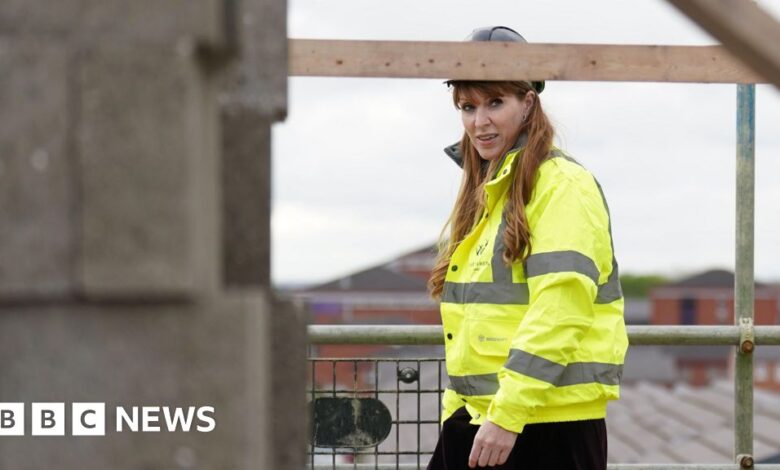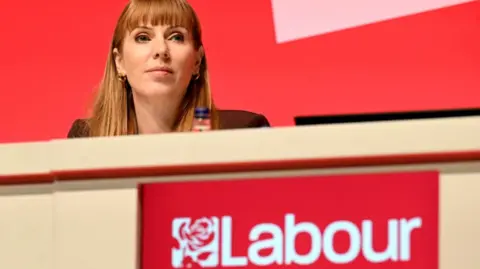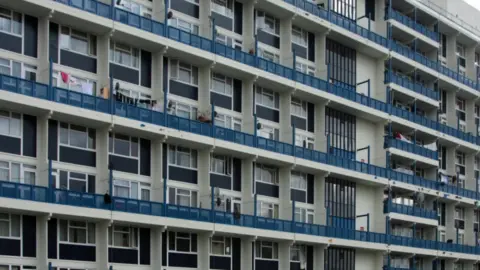Right To Buy: What’s wrong with letting people buy council houses?

 PA Media
PA MediaWhen Harold Wilson was Labour prime minister in the late 1960s, up to a third of people in England lived in a council house or flat.
But by the time Keir Starmer became prime minister in July this year, the proportion of people in England living in social housing had fallen to about 16% of the population – about four million.
About two million council-built properties have been sold to their tenants at significantly discounted prices under the Right To Buy (RTB) scheme since it was introduced by Margaret Thatcher’s Conservative government in the early 1980s.
Michael Heseltine described the advent of RTB as “laying the foundations of one of the most important social revolutions of the century”, but was selling off council houses more cheaply than new ones could be built simply laying the foundations of a housing crisis?
Waiting lists
Historically, money raised from selling off council houses has not gone far towards building new ones – new ones desperately needed, considering about 1.3 million people are on waiting lists for them in England.
Across the north-west of England, for example, about 4,350 council houses have been sold off in the last 10 years, with the money made from the sales going towards building or buying just over 1,400 others, according to the Office for National Statistics (ONS).
While the £336,612,000 raised from those sales may sound a reasonable sum, it works out on average at about £77,000 per house. And, generally, councils have not been allowed to keep the whole amount, instead having to hand a sizeable chunk back to the government.
About 200,000 people are on waiting lists for social housing in the region.
While housing associations may have built homes, and there may have been schemes funded by cash from other government pots, the fact that the money raised from selling off homes is nowhere near enough to rebuild or buy like-for-like has been a long-standing concern.
And it would seem Labour deputy prime minister and minister for housing Angela Rayner – who famously bought her own council house in Stockport under RTB – has taken on board the views of RTB critics.
Rayner has said recently she may impose restrictions so that people who move into newly built council houses will not be able to buy them in the future.
It is a decision that is likely to be welcomed by Labour politicians in regions where the need for social housing is arguably as great as ever, but the amount of it available is very low.
 PA Media
PA MediaThe Labour metro-mayors of both Liverpool and Manchester regions have both said they want to see more social housing built in their regions.
In May, Andy Burnham, leader of Greater Manchester, called on the-then Conservative government to pause RTB on new builds after losing 500 social homes to the scheme in 2022.
He argued that if planned homes could be bought by their tenants, it would be “like trying to fill a bath without the plug in”.
On Merseyside, virtually all former council housing stock was transferred to housing associations over the last two decades.
But metro mayor Steve Rotheram says registered social landlords (RSLs) have inherited some of the problems that came with RTB.
He says one Merseyside RSL had lost about a third of its homes through sales to tenants in the decade since the housing stock was transferred.
People who are tenants of RSLs can buy their homes under “preserved” RTB if they lived in their homes when the council owned them.
And once someone has lived in an RSL property for three years, they can apply for the Right To Acquire.
Rotheram says cheaper borrowing rates for RSLs and a moratorium on sales would help boost growth in social housing.
“You are not going to build a lot of houses for someone to come along in three or four years and buy it below market value,” he says.
“How we deal with this is part of our growth plan going to the government, and we are now trying to see if we can work with [Rayner] to come up with proposals.”
Blackpool Council’s cabinet member for economy and the built environment, Mark Smith, is clear that while the money generated from RTB sales is used to support various investments in housing, the RTB receipts his council receives are “not sufficient to replace lost social rent housing”.
And he says even with changes such as the government giving councils more flexibility to allow RTB receipts to be used alongside cash from other streams such as funds given by developers who get planning permission for private schemes, there is still some red tape in the way of using different types of funding together to build council housing.
“We do the best we can within the parameters of the policy as it exists currently but there is always room for improvement,” he says.

Under the new Labour government policies, councils and housing associations are being given “more freedom” to decide how to use their RTB money.
Previously, only 50% of the money a council received from a sale could go towards building or buying a new house.
But in future councils will be able to use all that money, and put money received from private developers handed over as part of planning agreements into projects as well.
These deals, known as Section 106 agreements, see developers give money to councils to mitigate any negative impacts their private schemes might have on local communities or housing markets.
Sources within the social housing sector say that in the past the “policy has never achieved anything like a one-for-one replacement ratio”.
“If it had then there would be a lot less concern about the policy,” one says.
“Yes, a Right To Buy home continues to be a home after it’s sold, but it contributes to a huge loss of social housing stock and contributes to housing waiting lists, or people having to live in unsuitable accommodation.”
‘Serious shortage’
The Local Government Association (LGA), which represents councils, says there is a “serious housing shortage in this country” and “record numbers of people living in temporary accommodation”.
Adam Hug, the LGA’s housing spokesman, says: “While the Right To Buy can and has delivered home ownership for many the scheme in its current form does not work.
“Rising discounts, alongside other measures that restrict councils’ use of Right To Buy receipts, mean that the money raised from the sale of property is usually not sufficient to cover the building costs of replacing the property.
“We have long called for the removal of rules and restrictions which disincentivise local authorities from building social homes, at risk of losing them.
“Councils must be given the control, power and flexibility to use receipt monies in a way that works best for their local areas, which includes retaining 100 per cent of the receipts permanently.”
‘Scandal’
In 2012, the Conservative-led government increased the discount a tenant could receive when buying their home.
Since coming to power, Labour has said the discount will be reduced to between £16,000 and £38,000, depending on the location – a significant reduction from the £136,000 discount currently available in London and the discount of just over £100,000 elsewhere.
Rayner, who bought her Stockport council house under a RTB discount in 2007 and sold it several years later for £48,000 more than she paid for it, said she wanted to see a “fairer” system.
Her department says it is a “scandal” that only about one third of homes lost to RTB have been replaced since 2012, and that it was “working at pace to reverse the continued decline of social rented homes”.
But while the government stresses there are “no plans to abolish the RTB”, the “social revolution” Lord Heseltine heralded nearly 45 years ago is clearly facing a radical change to everything but its name.





